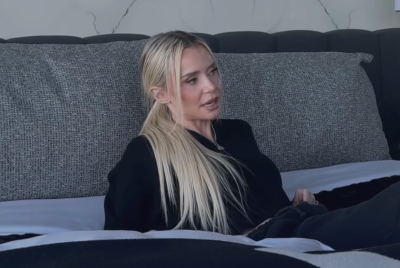Graphic Designer Hits Back With New LinkedIn Banner After Recruiters Say 'Open To Work' Is Desperate

KEY POINTS
- LinkedIn's Open to Work feature allows you to be shown as a priority in recruiters' searches since you are actively searching and open to work.
- However, a former Google recruiter has advised job-seekers against using the feature because it "feels like desperation"."
In the professional world, LinkedIn has become the go-to platform for job-seekers and recruiters alike. One of its popular features, the 'Open to Work' banner, allows users to signal that they are actively looking for new job opportunities. It places these candidates higher in recruiter searches and lets their network know they're seeking new roles. Sounds like a great way to boost your visibility, right?
Not everyone agrees. A former Google recruiter, Nolan Church, has advised job seekers against using the 'Open to Work' feature, claiming it "feels like desperation" to hiring managers. His comments have ignited a heated debate, with one graphic designer hitting back by creating her own version of the banner—sparking a viral moment on LinkedIn.
The Critique: 'Open to Work' Equals Desperation?
Nolan Church, now CEO of Continuum's talent marketplace, has openly criticised LinkedIn's 'Open to Work' banner, stating that it sends the wrong message to hiring managers. According to Church, displaying the banner might make candidates appear as if they are willing to take any job, which could come across as desperate.
"When it comes to job interviews, you want to give the impression that you have other options and that the company needs to fight for you," Church explained. He even likened recruiting to dating: "You have to make the other side feel like you're exclusive."
Church argues that the best candidates aren't openly searching for jobs because they are already thriving where they are. He believes recruiters want to "pull out" those hidden gems rather than hire someone who is visibly looking. "The biggest red flag on LinkedIn is the 'Open to Work' symbol," says Church. "It actually feels like desperation to a hiring manager."
Graphic Designer Strikes Back with '#Desperate' Banner

Church's comments, a sentiment shared by several other recruiters, sparked controversy, but one graphic designer, Courtney Summer Myers, wasn't having it. In response to the criticism, Courtney took to LinkedIn to defend those using the 'Open to Work' banner. She boldly created her own version: a banner that reads '#Desperate'—a tongue-in-cheek jab at the critique.
"Introducing the ✨hashtag #Desperate ✨ banner," she began in her viral post. "There's been a lot of discourse about how the hashtag #OpenToWork banner puts off recruiters and hiring managers because it makes you come across as desperate. Frankly, as a victim of redundancy, I am desperate, and I don't think that's anything to be ashamed of."
Courtney's post quickly gained traction, amassing nearly 3,000 comments. Many supported her perspective, arguing that needing a job doesn't diminish a person's skills or talent. "Being laid off doesn't reflect a lack of skills, talent, or work ethic—it's just bad luck. No one should be embarrassed that they need to pay their rent and bills, support their family, or feed themselves," she wrote.
Viral Support from LinkedIn Users
Courtney's post resonated with many in the LinkedIn community. One commenter noted, "When I see a talented person with an #OpenToWork banner, I think, daang, someone's gonna get lucky adding them to the team!" Another user echoed the sentiment, adding, "If someone is turned off by that clarity of communication, they are likely turned off by people asking for what they want—and well, that's just not right!"
Courtney's viral post underscores a key issue in job hunting: the stigma surrounding unemployment and the perception that seeking a job openly equates to desperation. For many, the 'Open to Work' banner is a sign of resilience and optimism, not a cry for help.
Is LinkedIn's 'Open to Work' Still Effective?
Despite the controversy, LinkedIn remains one of the most effective platforms for job seekers, with over 830 million users and 55 million listed companies. Its 'Open to Work' feature allows candidates to advertise their availability for new opportunities. According to LinkedIn, its 'Jobs for You' feature has helped 4 million people find jobs, with more than 14 million open positions currently available on the platform.
While some recruiters, like Church, may believe the best candidates are not openly searching, statistics show that many job-seekers have succeeded using LinkedIn's tools. The question remains: Should you use the 'Open to Work' banner, or does it send the wrong signal?
The Verdict: To Banner or Not to Banner?
The debate over LinkedIn's 'Open to Work' feature has raised important questions about the job-seeking process. While some, like Nolan Church, argue that advertising your job search makes you appear less desirable to hiring managers, others believe it's a practical and transparent way to get noticed.
Courtney's viral response has brought attention to the pressure many job-seekers feel to conceal their need for work. In an uncertain job market, displaying the 'Open to Work' banner can be a practical step toward finding employment. Ultimately, choosing the banner comes down to personal preference and strategy.
© Copyright IBTimes 2025. All rights reserved.






















